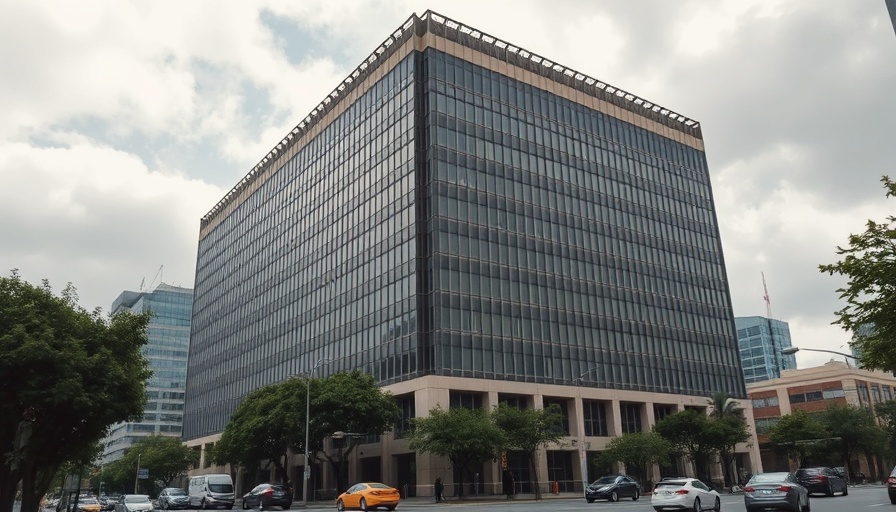
Bargain Hunting in Oakland: What’s Behind the Collapse of Property Values?
Recently, an investor poured nearly $100 million into an office tower in Oakland, but reports indicate that its market value might now plummet to a fraction of that amount. This downturn raises crucial questions about the current state of Oakland's commercial real estate market and whether this is a temporary setback or a signal of broader economic challenges.
An Overview of Oakland's Real Estate Landscape
Oakland, once viewed as an up-and-coming commercial hub, is experiencing a notable shift in its real estate environment. With rising vacancy rates and a workforce trend favoring remote work, office spaces are becoming increasingly underutilized. The present scenario fosters a skeptical outlook for property investments in the area.
Potential for New Investment: A Silver Lining?
The sale of the tower's debt might clear a path for new investors to acquire the asset at a steep discount. In many cases, distressed properties attract buyers looking for long-term gains. These savvy investors could reshape the fabric of Oakland's commercial sector. Investing in undervalued real estate can sometimes yield substantial returns if market conditions improve, pointing towards a potential upswing in Oakland's economic situation.
The Ripple Effects of Office Space Decline on Local Businesses
As office spaces decline, local businesses, particularly those reliant on foot traffic, may face challenges. Restaurants, shops, and service providers thrive when the office population is robust. A shrinking workforce in urban areas could directly impact these enterprises, leading to further economic repercussions. Conversely, some retailers may benefit by pivoting toward e-commerce or adopting flexible work environments.
Comparisons with Other Markets
Looking outward, other urban centers like San Francisco have faced similar challenges. Some experts suggest that these trends could result in opportunities for avant-garde developments geared toward mixed-use spaces or residential living. By examining the possible parallels between Oakland and other affected markets, stakeholders may glean insights into shifting consumer behaviors and preferences.
Forecasting the Future: Will Oakland Bounce Back?
The fate of Oakland’s commercial real estate hinges on several variables, including economic recovery speeds and shifts in worker behaviors. Predictions suggest a diverse future; while opportunities exist, investors should remain cautious. The long-term prospect hinges on adaptive strategies to accommodate new working models, such as co-working spaces and amenities tailored to a new urban populace.
Your Role: Understanding the Opportunities Surrounding You
Investors and community members alike should remain informed and open-minded about the evolving economic landscape of Oakland. Whether looking to capitalize on lower property prices or advocating for local businesses, understanding the landscape can empower individuals to make impactful decisions. Engage with town hall meetings, support local initiatives, and keep a watchful eye on property trends to better navigate these changes.
Conclusion: The Path Ahead
The developments surrounding Oakland’s once-promising office tower signal a crucial juncture for the city. As property values fluctuate and debt sales unfold, there lies a potent opportunity for fresh investments to reshape the market. By remaining vigilant and engaged, stakeholders can actively contribute to Oakland’s recovery narrative.
Given the challenges ahead, the call is clear—stay informed, adapt, and seize the moment. Understanding these shifts not only equips investors and consumers with valuable insights but can also foster community resilience in facing upcoming economic obstacles.
 Add Row
Add Row  Add
Add 




 Add Row
Add Row  Add
Add 

Write A Comment